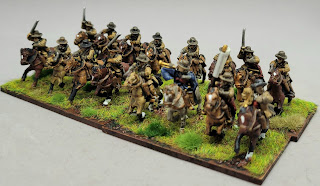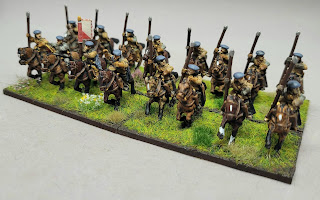Lord Richard Molyneux's Regiment of Horse

Molyneux, sometimes Molineux, was Viscount Molyneux of Maryborough in the Irish peerage. Richard inherited his title aged 6, when his father died. Molyneux attended the commission of array on Preston Moor, and assisted at the seizure of the magazine at Preston. On the outbreak of the war he raised two regiments, one of horse and one of foot, composed chiefly of Roman Catholics. They formed part of the Lancashire forces under the command of the Earl of Derby. Present at the siege of Manchester; the siege of Brampton Bryan; Chipping Campden; stormed Crewe Hall; the siege and battle of Nantwich; they marched north with Rupert to relieve York fighting at Stockport, Bolton and Liverpool on route, before fighting at Marston Moor. After Marston they would fight at Ormskirk and possibly Montgomery. Molyneux would finish the First Civil War in command of Prince Maurice's Lifeguard of Horse. Molyneux continued to support the Royalist cause after the King's surrender, but was not involved...



